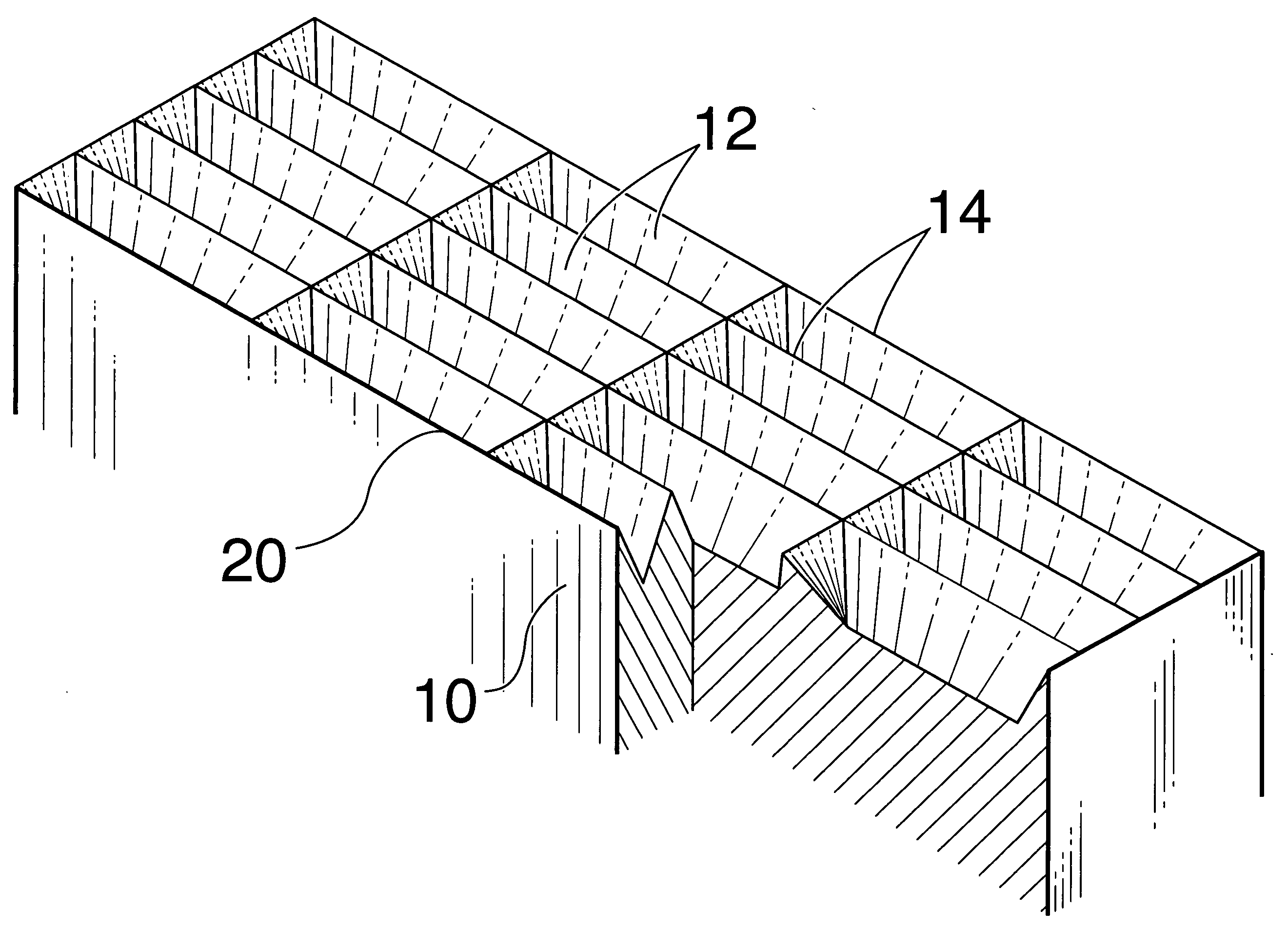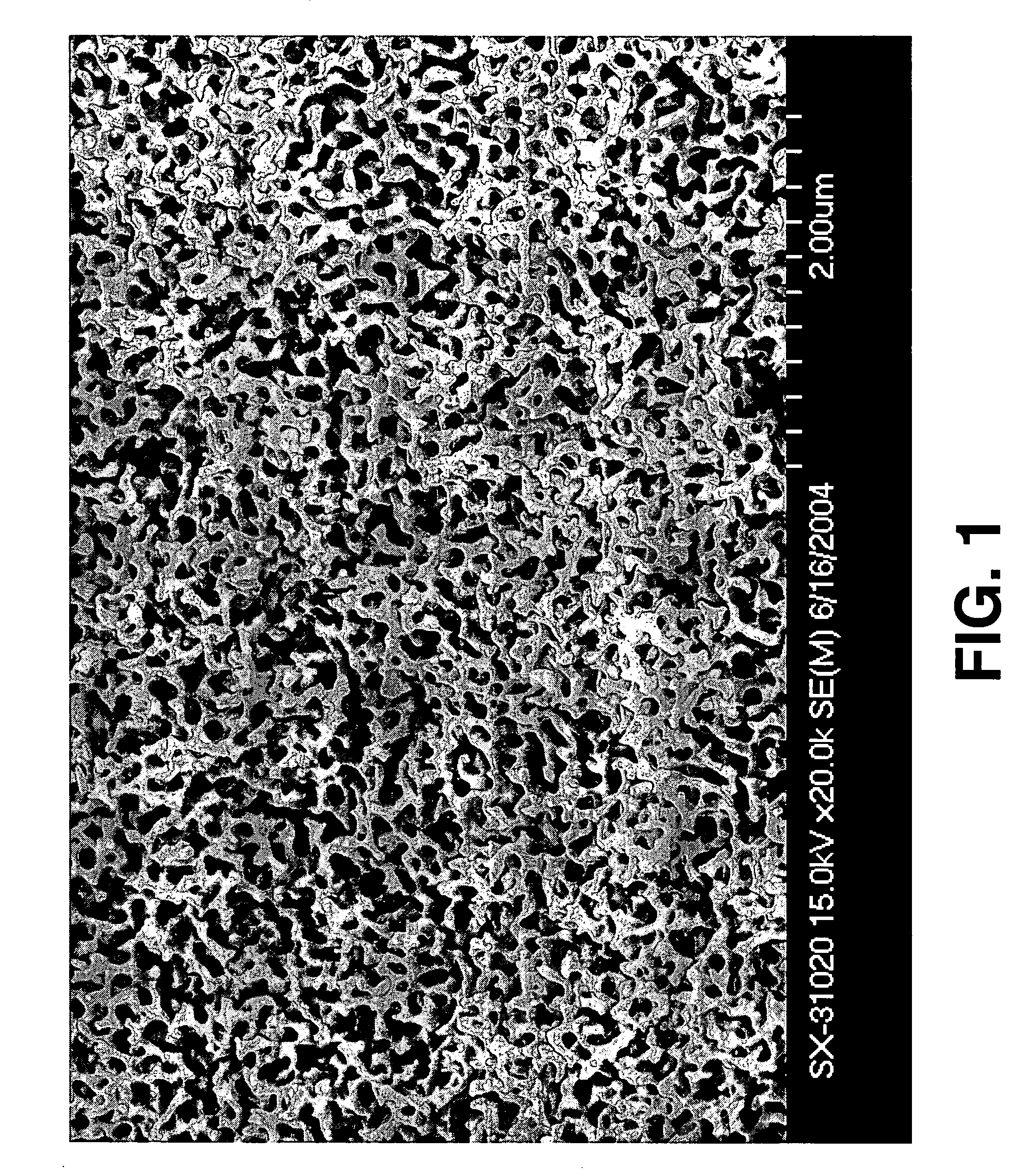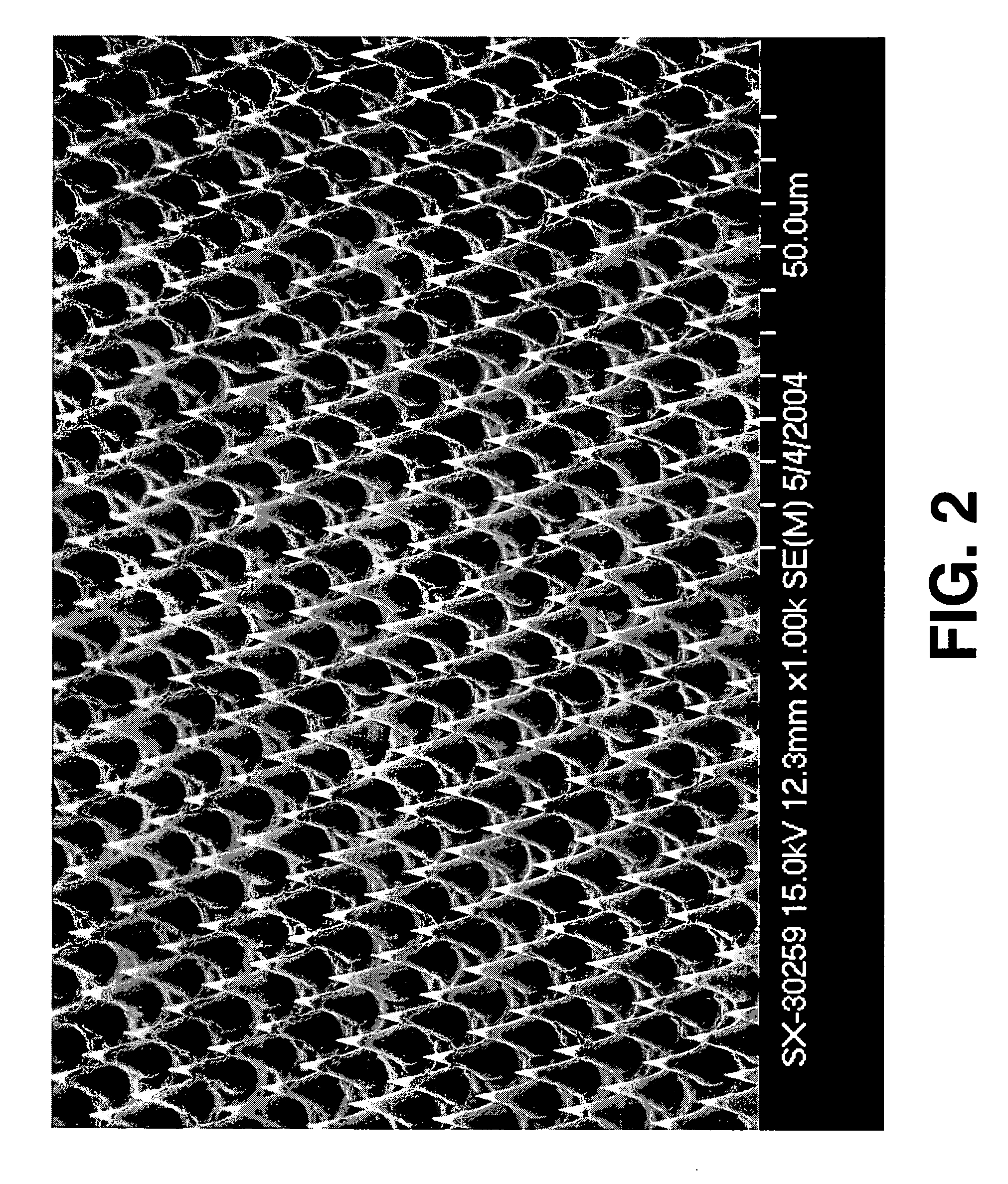Friction drag-reducing surface
a friction drag and surface technology, applied in the field of friction drag reduction surface, can solve the problems of few currently available materials that efficiently provide significant viscous drag reduction, and none are expected to give significant drag reduction, and achieve the effect of reducing viscous drag
- Summary
- Abstract
- Description
- Claims
- Application Information
AI Technical Summary
Benefits of technology
Problems solved by technology
Method used
Image
Examples
example i
[0039] In accordance with the present invention, sodium borosilicate glass comprising 68.5 molecular % SiO2, 23.6 molecular % B2O3, and 7.9 molecular % Na2O is heat treated at 700° C. for 1 hour, resulting in phase separation via spinodal decomposition. The glass is cooled, and the surface is machined with a diamond cutter to produce macroscale depressions and ridges. The surface of the material is subsequently etched with an aqueous solution of HF, etching back the recessive phase and revealing the protrusive phase to produce microscale surface features. The microscale features are mechanically removed from the ridge tops by lapping. The surface is then coated with a hydrophobic self-assembled monolayer by immersing the material in a solution of (tridecafluoro-1,1,2,2 tetrahydrooctyl) trichlorosilane in hexanes.
example ii
[0040] In accordance with the present invention, differentially etchable glasses are drawn into a bundled array. The bundle is cut and the surface is machined with a diamond cutter to produce macroscale depressions and ridges. The surface of the material is subsequently etched with an aqueous solution of HF, etching back the recessive phase and revealing the protrusive phase to produce microscale surface features. The microscale features are mechanically removed from the ridge tops by lapping. The surface is then coated with a hydrophobic self-assembled monolayer by immersing the material in a solution of (tridecafluoro-1,1,2,2 tetrahydrooctyl) trichlorosilane in hexanes.
example iii
[0041] In accordance with the present invention, the material described in Example II is used as a mold for casting a hydrophobic polymer. A photocurable perfluoropolyether (See J. Rolland et al, J. Am. Chem. Soc. 126, pp. 2322-2323, 2004) is poured over the material in Example II and cured by exposure to ultraviolet light. The polymer is peeled off and used as a mold for casting a curing a second (possibly the same composition) hydrophobic polymer. The second casting, curing, and peeling step creates a duplicate of the original glass structure in a hydrophobic polymer, creating a drag reducing polymer structure.
Active Material Embodiments
[0042] In active embodiments of the invention, such as that illustrated in FIGS. 7-10, for example, the gas 16 is replenished by forcing gas 16 through holes 24 which penetrate into the depressions 12 through the base material 10. The gas 16 on the surface 20 can thus be actively maintained and pressurized. Since gas 16 may be constantly added to...
PUM
| Property | Measurement | Unit |
|---|---|---|
| contact angle | aaaaa | aaaaa |
| micro-scale surface feature | aaaaa | aaaaa |
| contact angle | aaaaa | aaaaa |
Abstract
Description
Claims
Application Information
 Login to View More
Login to View More - R&D
- Intellectual Property
- Life Sciences
- Materials
- Tech Scout
- Unparalleled Data Quality
- Higher Quality Content
- 60% Fewer Hallucinations
Browse by: Latest US Patents, China's latest patents, Technical Efficacy Thesaurus, Application Domain, Technology Topic, Popular Technical Reports.
© 2025 PatSnap. All rights reserved.Legal|Privacy policy|Modern Slavery Act Transparency Statement|Sitemap|About US| Contact US: help@patsnap.com



